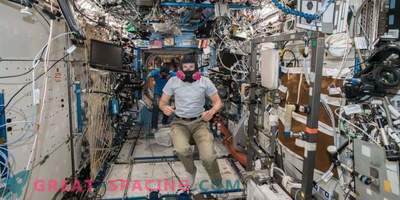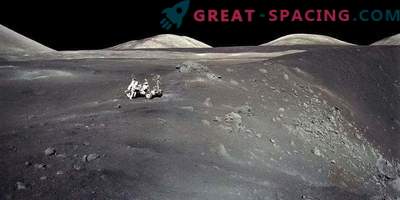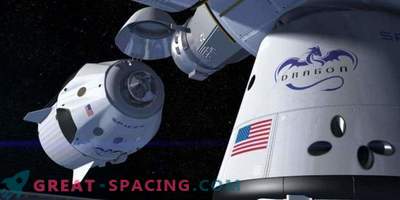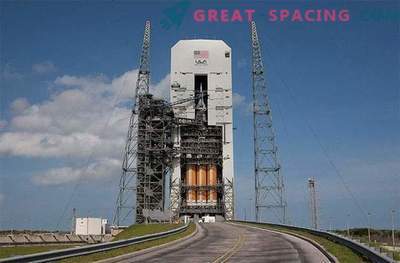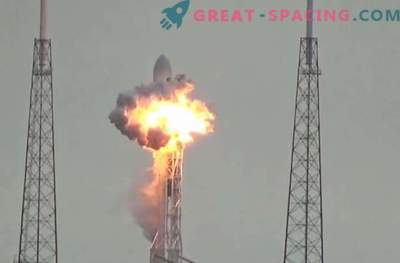
The crew of astronauts of the National Aeronautics and Space Administration (NASA), preparing for the first manned flight of the Apollo program, scheduled for March 21, 1966, during training in Florida.
In the early years of NASA, the experience was gained from its own mistakes, tests and procedures were developed individually for each program. One of such tests in the Mercury program (Mercury) was the “disconnect test” (plugs-out test), in which the spacecraft systems were tested, and the countdown to the launch was simulated. This test was never considered dangerous. But on January 27, 1967 this test cost the life of the Apollo 1 team.
The purpose of the “Apollo -1” was the usual test flight, which was typical for the first flight of the new program. The crew, the astronauts Grissom, White and Chaffee, were to put the Command / Service Module (CSM) into orbit of the Earth.
The test was carried out on a spacecraft ready for launch, hoisted onto a non-tucked Saturn-1B launch vehicle (Saturn IB). It all started in a standard and usual way. The power wires were disconnected, respectively, the compartment received voltage exclusively from internal batteries. Then the cabin was filled with pure oxygen, and the pressure was above atmospheric - 16, 7 pounds per square inch (115, 1 kPa). After the crew entered the spacecraft at about one o'clock in the afternoon, the entire team of control center engineers took their positions for the test. Also on site were employees in the White Room (White Room) - a mobile room through which the astronauts passed into the aircraft.
During the first five hours, minor problems interrupted the test. Grissom complained of a disgusting smell that resembled sour milk in his oxygen block. The alarm also triggered due to the increased oxygen flow in astronaut space suits. But it was nothing compared with the constant problems with communication. Due to static electricity, communication between the crew and the control center was almost impossible. Grissom angrily remarked that they would never reach the moon unless they could establish a normal connection between two or three buildings.
At 6:31 pm, technical specialists of the Control Center recorded a sharp increase in the flow of oxygen and pressure inside the cabin. This telemetry failure was accompanied by a distorted message: “Fire,” someone said. And he added - They struggle with fire, get out of there. Open it, we will burn, get out of here. " Because of the interference, it was even impossible to unambiguously determine who owned this voice.
The monitors who were broadcasting the image from the White Hall captured everything that was happening: the fire, visible through a tiny window, a team trying to open the hatch. But no one could move it one iota - the hatch opened into the apparatus, where there was increased pressure. Three seconds after the team noticed the fire, the pressure inside the module reached a critical point. There was a rupture of the body and the flames gushed into the White Hall. All sounds in the communicator disappeared. Half an hour later, firefighters and rescuers were able to extract the bodies of astronauts. Ed White was found in his chair, turning in the direction of the hatch.
The investigation of the incident lasted a year. Within two months, the aircraft was completely disassembled, and every detail was tested on a different module. Ultimately, it was concluded that there was a short circuit in the wire leading to a urine collection system. In the atmosphere consisting of pure oxygen, where everything was also saturated with it, this spark instantly turned into a flame. The nature of the damage indicates that the fire began to spread below, beyond the command line of sight. It took no more than ten seconds for the ship to catch fire. But the team did not burn alive. An autopsy revealed that their airways were affected by combustion products. They died less than a minute after they reported a fire.
The investigation of the emergency focused on the controversial decision of NASA to conduct a test of the spacecraft, using the excess pressure of pure oxygen. The manufacturer of the module, North American Aviation, recommended NASA not to test the spacecraft under pressure, warning of the risk of fire. But NASA insisted on it and began to conduct testing until the end of all six missions of Mercury and ten missions of Gemini. Returning to those events, Dick Slayton (Deke Slayton), head of the department of astronauts, said that it was only thanks to a happy accident that such tests did not end in tragedy during the creation of Mercury and Gemini by McDonnell. It was an impermissible error that this test was not classified as dangerous. These included only tests that included fueling, self-igniting rocket fuel, testing of cryogenic systems, high-pressure tanks, pyrotechnic tests and pressure chamber tests. This emergency led to two significant changes in the project. The hatch opening inwards was replaced with a lightweight, quick-opening device made of aluminum and fiberglass. It could be opened in less than 10 seconds. NASA also changed the composition of the atmosphere for preliminary tests. Instead of pure oxygen, its mixture with nitrogen began to be supplied, its share was 40%. This mixture was less supportive of burning, although astronaut costumes were still filled with pure oxygen. And only after starting the mixture was replaced with pure oxygen until the end of the mission.
No crew ever flew on Apollo-1. This name was assigned to Apollo -204, and manned flights were continued on Apollo 7 in October 1968. The test that led to the death of people was never reclassified as dangerous, but Apollo 7 conducted it with an open hatch.
